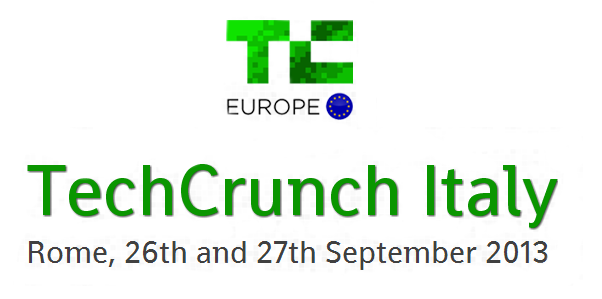by Mkgt team | Mar 27, 2014
 Vivocha has been announced today as one of the Finalists for Red Herring‘s Top 100 Europe award, a prestigious list honoring the year’s most promising private technology ventures from the European business region.
Vivocha has been announced today as one of the Finalists for Red Herring‘s Top 100 Europe award, a prestigious list honoring the year’s most promising private technology ventures from the European business region.
The Red Herring editorial team selected the most innovative companies from a pool of hundreds from across Europe. The nominees are evaluated on 20 main quantitative and qualitative criterion: they include disruptive impact, market footprint, proof of concept, financial performance, technology innovation, social value, quality of management, execution of strategy, and integration into their respective industries.
Finalists for the 2014 edition of the Red Herring 100 Europe award are selected based upon their technological innovation, management strength, market size, investor record, customer acquisition, and financial health. During the months leading up to the announcement, hundreds of companies in the telecommunications, security, Web 2.0, software, hardware, biotech, mobile and other industries completed their submissions to qualify for the award.
This year the Finalists are invited to present their strategies for success at the Red Herring Europe Forum in Amsterdam, April 7-9, 2014. The Top 100 winners will be announced at a special awards ceremony the evening of April 9 at the event.
by Mkgt team | Feb 17, 2014
Join us on March 5th at 2pm GMT for a live webinar and learn how you can use a multi-channel approach to provide better customer service.
Over the past five years, the ways in which consumers communicate, gather information, and make decisions on the purchase of products and services has changed dramatically. Customers now use multiple channels to access information which has made consumers much more attentive and demanding.
The proper management of customer service is now a necessity for most businesses. But when it comes to implementing a proper multi-channel strategy, numerous options are available and many decisions must be made. How do you contact visitors online? Who interacts with them? Which channels do you use? How can you provide great support and increase conversion rates, but keep costs low?
Engaging with and supporting your customers online requires a new approach and different logic compared to traditional telephone support.
By using Vivocha to provide real-time support through Chat, Voice, and Video, and Zendesk as your help desk tool for customer support, you can create an exceptional customer experience while reducing overall service costs.
Vivocha and Zendesk are pleased to invite you to this FREE webinar on March 5th.
We will discuss:
- Why differentiating in support can make all the difference
- Improving the overall customer experience while reducing contact center costs
- The best ways to engage with customers before, during, and after a purchase
AGENDA
======
- Welcome and speakers presentation
- Vivocha: How real-time support improves the customer experience and reduces contact center costs
- Zendesk: Multi-Channel: the only way to great customer service
- Live Demo
- Q&A Session
by Mkgt team | Jan 10, 2014
Businesses are engaging with more and more customers through online channels. Now, more than ever, businesses need to fully support the online customer experience and provide them with quality online support. In addition to phone, email, self-service, and video customer support channels, live chat is a great tool for online customer support that can lead to happier customers, increased conversions, and a reduction in service costs. But should your business use live chat for support? Here are three benefits to consider:
1. Customers Love Live Chat
Live chat is one of the best ways to get instant communication with a company. It has become not only the leading method for online support but also yields to the highest satisfaction rates among customers.
“Within the online channel, the chat feature has become the leading contact source, as 42% of full-service customers indicate using a live online chat feature vs. email (23%) or other social media forum (16%). Additionally, online satisfaction is highest among customers who use the chat feature”
(from 2013 U.S. Wireless Customer Care Full-Service Performance Study)
Kirk Parsons, senior director of the telecom services practice at J.D. Power, stated later in that same study:
“The higher levels of satisfaction with online chat are partially due to the efficiency and immediacy of the experience”
When customers engage with a live chat representative, the overall experience is quick and simple. Customers welcome the ability to easily enter order numbers and confirmation codes into a chat box for faster service. Customers can continue browsing and easily view online content while chatting. And they can easily carry that support all the way through checkout Overall, live chat brings very few interruptions to the customer’s online experience.
With live chat, agents have access to each customer’s browsing history, shortcuts/macros, co-browsing features, and many other helpful tools. This means chat agents can help the customer with the context of customer’s history and activity. With access to better tools, agents can provide better, more relevant support to customers – which, in the end, is a “win-win” for both the customer and the agent.
90% of customers consider live chat helpful (according to an ATG Global Consumer Trend study.) Even before engaging with live chat, seeing the “Live Chat” button bolsters confidence. Customers like knowing that they can get immediate help if needed.
Contrast that to the experience with phone or email support. Customers get frustrated plugging through phone prompts of “For support, press one, for sales, press two…please say your account number and a representative will be right with you,” followed by a long queue and hold music. Live chat occasionally has a queue as well, but it is typically much shorter than a phone queue. Agent and the customer can share names, account numbers, and tracking numbers via chat instead of over the phone where mistakes can be common.
And instead of waiting for days to receive answers via email, customers can receive their answers immediately and continue with their online purchase. Waiting for days for an email response can be so frustrating to a customer that they won’t return to the website even after the email response. Customers want to get answers and help right away, while they are on the website or in the middle of a transaction. A study titled Making Proactive Chat Work by Forrester Research found that:
“44% of online consumers say that having questions answered by a live person while in the middle of an online purchase is one of the most important features a Web site can offer.”
By offering live chat as one of several support options, you are providing a support channel for customers who might have left your website without ever asking for support.
2. Increased Sales
Not only do customers love live chat, businesses love it too.
“According to a poll by Andersen Consulting, almost 62 percent of Internet consumers said they would purchase more products online if live customer support were available.”
With that type of increase in online sales, live chat will pay for itself many times over. Then, add to it reduced shopping cart abandonment by up to 30% and a boost in average order size and you’ve got quite a case for using live chat.
With the wide variety of choices that customers have online, a customer at the stage where an item is in their cart is a big deal! If a customer gets to that point and needs support, the likelihood of them making a phone call or sending an email is quite low. But it is highly likely to use live chat because of its immediacy. Recent studies conclude:
“77% of people shopping online would like to make contact with a real person before making a purchase, and over half say that the lack of interaction has caused them not to purchase.”
In 2002, Wells Fargo made an attempt to use live chat for online customer support. It ultimately failed and they pulled the feature. After additional research, they tried again in 2008. This time, the results were fantastic and live chat continues to be used as one of their customer support tools. Regarding that experience, Forrester stated:
“High customer satisfaction scores and a double-digit increase in converted shoppers have shown the value once and for all of this technology.”
(Wells Fargo Proves The Business Case For Online Chat – Forrester)
After having a positive support experience, customers are more likely to return and do business with that company in the future. An emarketer.com survey found that 63% of customers were more likely to return to a website that offers live chat. “62% reported being more likely to purchase from the site again. A further 38% of respondents said they had made their purchase due to the chat session itself. All these attitudes were even more prevalent among respondents who bought online at least weekly.”
3. Reduced Service Costs
As customer service teams use live chat, they see an overall decrease in the service costs in supporting online customers. The initial set-up and implementation of a live chat tool is quick and easy. A simple solution can be launched in one day while a solution that is fully customized and integrated with a CRM and/or e-commerce platform with proactive rules, etc. typically takes around 10-20 days to set up and launch. This is quite quick in both scenarios and the reduced implementation time keeps budgets low and technical teams happy.
The cost per interaction of live chat is lower than most alternative methods like phone or email support. Because of quicker response times, agents spend less time per interaction and thus each interaction takes up less of the agents time, which reduces the need for extra agents.
Additionally, since agents can support multiple customers simultaneously (typically 4-5, but sometimes more!) this is far less costly than phone support where agents can support only one customer at one time. Live chat will also reduce the number of calls coming in to the call center as customers turn to live chat over dialing a phone number. Many businesses see call deflection rates of 30-70%! Some businesses even go as far as eliminating the need (and cost) of their toll-free numbers.
Businesses can also see big cost reductions over time due to improvements in efficiency – agents handling multiple chats, using pre-written responses, directing customers to web pages, etc. Saving just one second per chat can result in an overall time savings of 40-80 hours per year. More efficiency can either mean the ability to support more web traffic and customer support requests with the same number of agents, or with the same amount of customer support requests, fewer reps are needed.
Overall, the use of live chat can save money on implementation, ongoing platform and service costs, and employee task time.
A Final Note
There are many ways for customer support agents, marketing departments, and sales teams to use live chat to make customers happy, increase online sales and conversions, and reduce service costs. With all of these benefits, why aren’t more businesses using live chat?
Certain businesses have products and services that naturally match best with email support, phone support, or other support channels. Live chat is a good fit for most, but its not a good fit for everybody.
Some customer demographics prefer other support channels. Older generations, for example, are typically more accustomed to making a phone call when they have a problem instead of starting a live chat. Businesses need to really think about their customers and what type of support best fits their behavior and needs. Thus, businesses with certain types of customers aren’t a good fit for live chat.
We will discuss these and other downsides of live chat in future posts and webinars.
If you’ve identified another upside or downside to live chat, please mention it in a comment below

by Mkgt team | Oct 14, 2013
 Ready to join Vivocha at the Internet Retailing Conference 2013 on the 16th October?
Ready to join Vivocha at the Internet Retailing Conference 2013 on the 16th October?
It is the UK’s largest conference for online and multichannel retailers. Major industry figures will keynote the conference and share their knowledge and insights from key points in their industry-changing journeys.
We’ll extensively demo our innovative online customer interaction platform that enables businesses to communicate seamlessly with prospects and customers directly on their website.
It’s the perfect addition to an e-commerce platform and to a customer interaction solution, providing a superior shopping experience and thus increasing conversion rates – as clients such as Nectar, Save the Children, and Liu-Jo have already experienced.
We’ll be waiting for you at stand 25! Don’t miss the chance to meet us!
VISITOR PASS – FREE
List of exhibitors: http://internetretailingconference.com/exhibitors/
List of workshops: http://internetretailingconference.com/free-to-attend-workshops/
 Vivocha has been announced today as one of the Finalists for Red Herring‘s Top 100 Europe award, a prestigious list honoring the year’s most promising private technology ventures from the European business region.
Vivocha has been announced today as one of the Finalists for Red Herring‘s Top 100 Europe award, a prestigious list honoring the year’s most promising private technology ventures from the European business region.
 Ready to join Vivocha at the Internet Retailing Conference 2013 on the 16th October?
Ready to join Vivocha at the Internet Retailing Conference 2013 on the 16th October?
